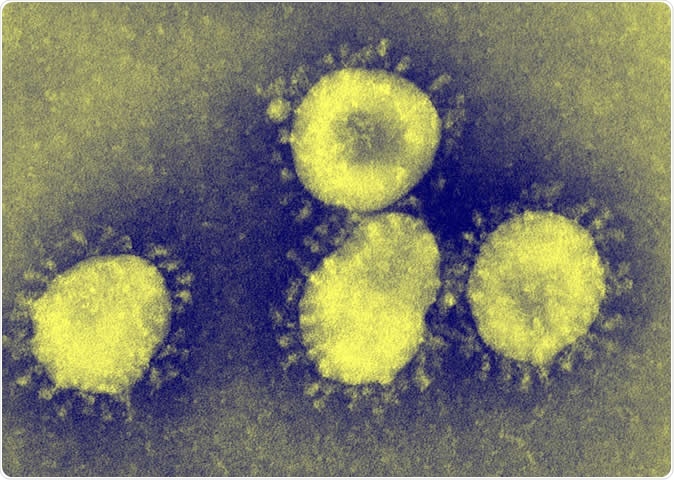The United States has its first confirmed case of a mysterious and new virus, the Wuhan coronavirus, which originated in China and has killed nine people and sickened hundreds since it first appeared, the Centers for Disease Control and Prevention (CDC) reports.
The first case of the 2019 Novel Coronavirus (2019-nCoV) in the U.S. appeared in Washington when a patient recently returned on January 15 from Wuhan, China, the central Chinese city where the virus was first reported. He arrived at the Seattle-Tacoma International Airport before any screening for the coronavirus has begun.

Coronaviruses are a group of viruses that have a halo, or crown-like (corona) appearance when viewed under an electron microscope. Credit: CDC/Dr. Fred Murphy
The virus has caused the pneumonia-like illness that was previously believed to be spread by animals. In recent reports, however, the human-to-human spread is happening, though it’s still unclear how the virus spreads in human populations.
The patient sought medical attention in the state by January 19, where he was treated for the illness. Based on the patient’s history of travel and manifestations, the healthcare professionals have suspected that the patient has contracted the new virus. They collected a clinical specimen and sent it to CDC for analysis overnight and confirmed the diagnosis through a test called the Real-time Reverse Transcription-Polymerase Chain Reaction (rRT-PCR) test.
The patient is now stable but still being kept in isolation out of an abundance of precaution and to prevent the spread of the virus to other people in the country.
CDC is currently working closely with local partners and the state to ramp up measures preventing the spread of the virus. It has initiated an ongoing investigation to track all close contacts to determine if anyone else has become sick.
Efforts to control the virus spread
Last weekend, the CDC started screenings in all airports in the country to detect passengers coming from China, particularly from the city of Wuhan. The screening includes checking of the temperature and observing for signs and symptoms that may hint an ongoing coronavirus infection, including the difficulty of breathing and a cough.
Currently, the CDC has raised its travel notice for Wuhan, China from level 1 to level 2, advising those who will travel to practice enhances precautions.
“To further protect the health of the American public during the emergence of this novel coronavirus, CDC is beginning entry screening at three ports of entry. Investigations into this novel coronavirus are ongoing and we are monitoring and responding to this evolving situation,” Dr. Martin Cetron, director of CDC’s Division of Global Migration and Quarantine, said.
The CDC is deploying 100 additional staff to three other airports – SFO, LAX, and JFK, to help the existing staff at CDC quarantine stations.
What is the 2019-nCoV or Wuhan coronavirus?
The first cases of the Wuhan coronavirus or the 2019-nCoV were seen in patients exposed to a large market where live animals were present, prompting health officials to suggest that the new virus has been spread from animals to humans.
Though there is still no spread in communities, Chinese officials have reported certain indications that some limited person-to-person spread may have happened.
The Wuhan coronavirus belongs to the same family as the Severe Acute Respiratory Syndrome (SARS), which was recognized as a global threat in March 2003, first appearing in China. SARS causes a serious form of pneumonia, which causes acute respiratory distress and in worse cases, death.
Coronaviruses are a large family of viruses that can cause illness, ranging from common colds to more severe illnesses such as SARS and the Middle East Respiratory Syndrome (MERS-CoV). The new strain that appeared in China is called a novel coronavirus (nCoV) is an infection not previously identified in humans, the World Health Organization (WHO) reports.
The 2019-nCov first appeared in Wuhan City, Hubei Province of China in December 2019, and health officials reported it to the WHO. By January 7, 2020, the Chinese health officials identified the culprit for the infections as the 2019-nCov.
The common signs and symptoms of the disease include respiratory symptoms, cough, fever, breathing problems, and shortness of breath. In more severe cases, it may lead to kidney failure, severe acute respiratory syndrome, and even death.